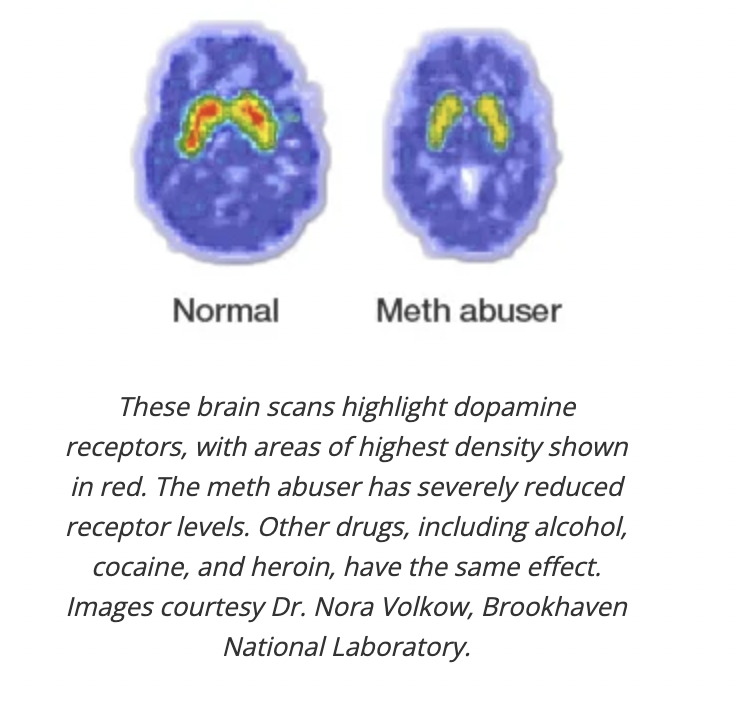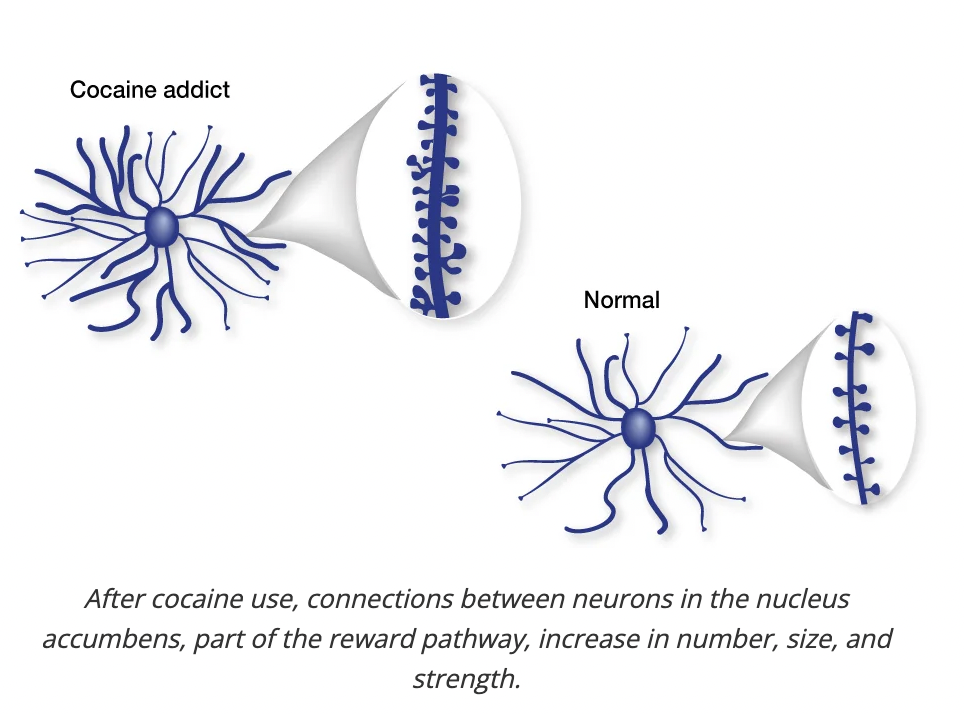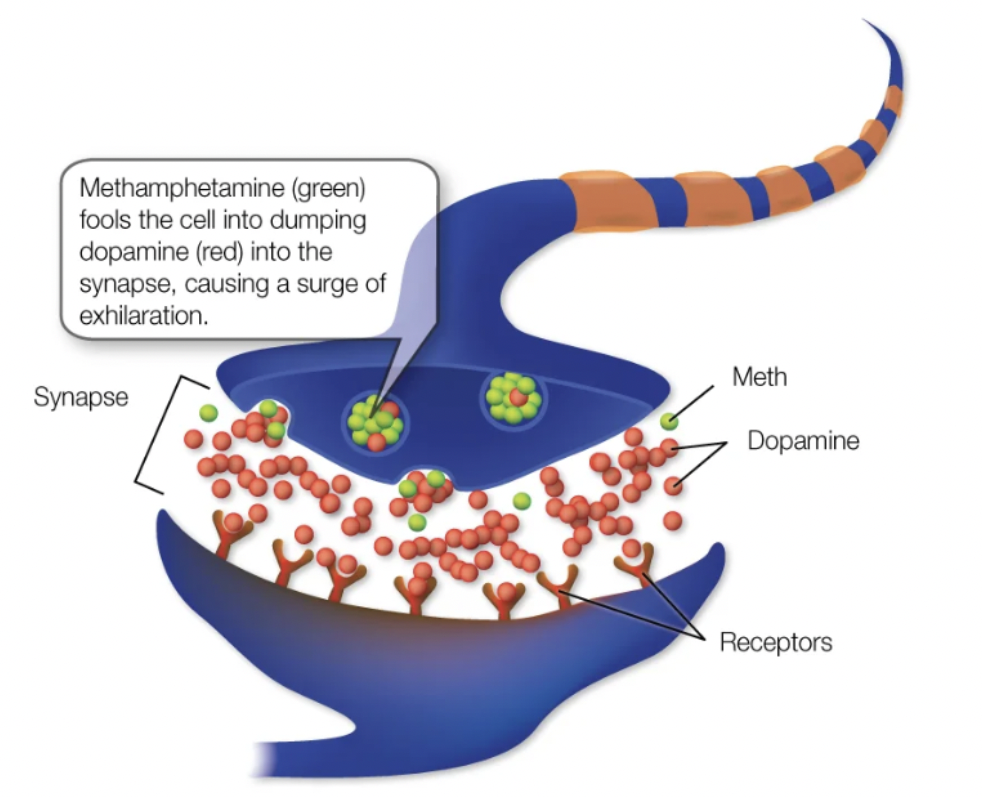What are psychostimulants?
Before understanding the comparisons between medications and psychostimulants, such as cocaine, nicotine, amphetamine, and more, it is important to know what they are and how they function. Psychostimulants have a long history of being banned after years of use due to learning more about their detrimental effects, like addiction. An article by Mozafari et al. discusses the topic of substance use disorders (SUDs), specifically psychostimulant use disorder (PUD) (2023). These disorders are characterized by having a difficulty limiting drug intake and having high motivation for use despite the known negative effects.
PUD ultimately has effects on reward and motivational circuitry within the brain. This includes dopaminergic projections throughout different areas of the brain including the ventral tegmental area and the nucleus accumbens. The release of dopamine from these projections causes a feeling of reward. This makes sense because drugs have a rewarding effect which is highlighted through the individual’s behavior, causing motivation to continue using the drug. To act, the dopaminergic projections modulate glutamatergic and GABAergic transmission, influencing the most abundant excitatory neurotransmitter, glutamate [1].
Glutamate receptors are either ionotropic, which involve NMDA, AMPA, and kainate, or metabotropic (mGluRs), which have eight subgroups. Different receptors play diverse roles in storage, consolidation, and retrieval of memory and learning, changing synaptic plasticity along the way. Long term changes to these receptors occur due to the influx of dopamine and depend on synapse function. Drug use does this by disrupting glutamate homeostasis and inducing long-term depression (LTD), long-term potentiation (LTP), or long-term facilitation (LTF), which all refer to how the receptor is functioning. In the case of long term drug use, these functions may include receptor loss (Figure 1) or forming new connections (Figure 2) [1].
Figure 1. Reduced dopamine levels [2].

Figure 3. New connections of neurons [2].

What does this mean?
Drugs that affect the brains reward circuit such as psychostimulants or certain medications cause a sense of euphoria and a rush of dopamine, which is shown in figure 3. When working properly, these reward systems motivate repeated behaviors like eating or spending time with friends. Instead, the dopamine surge from the drug reinforces the pleasurable feeling, leading to repetitive use [3].
Figure 3. Surge of Dopamine from drug [2].

Comparisons of psychostimulants to medication
Medications are used to make quality of life better, which often makes the patient feel good by relieving symptoms and may give them the urge to take more just like other drugs such as alcohol or nicotine. With continued use of both medicine and psychostimulants, the relief or high that the person feels begins to lower, which is known as tolerance. This is due to the reduction of the reward circuit’s ability to respond to the drug. Unlike all psychostimulants, however, certain medications are more susceptible to addiction than others. Despite this, an article from Health Direct explains that becoming dependent on a prescription drug from taking it over a long period of time may cause withdrawal symptoms and lead to addiction (2023). Overall, the use of medications has the same ability to change the brain’s circuitry and function as psychostimulants if used for a long period of time [4].
Conclusion
Psychostimulants are a group of well-known drugs such as nicotine, cocaine, and amphetamine. Figure 4 portrays how they work by flooding the brain with dopamine through different types of glutamate receptors, especially mGluRs. This influx of dopamine eventually leads to the change in neural reward circuitry through neuron loss or new connections. The tolerance that the individual builds up along with the rewarded feeling of taking the drug influences further consumption. While long-term use of prescription medications is safer than psychostimulants in many areas, they still have the ability to change the brain’s reward and motivation circuitry along with its functions. Because of this, becoming dependent on medications and having withdrawal symptoms after the discontinuation of use is a possibility.
Figure 4. Effects of psychostimulants and medications [Artstract created by Megan Olson].

[1] Mozafari, R., Karimi-Haghighi, S., Fattahi, M., Kalivas, P., & Haghparast, A. (2023). A review on the role of metabotropic glutamate receptors in neuroplasticity following psychostimulant use disorder. Progress in Neuro-Psychopharmacology and Biological Psychiatry, 124, 110735. https://doi.org/10.1016/j.pnpbp.2023.110735
[2] Drug Use Changes the Brain Over Time. (n.d.). Retrieved March 12, 2024, from https://learn.genetics.utah.edu/content/addiction/brainchange
[3] Abuse, N. I. on D. (2018, June 6). Understanding Drug Use and Addiction DrugFacts | National Institute on Drug Abuse (NIDA). https://nida.nih.gov/publications/drugfacts/understanding-drug-use-addiction
[4] Australia, H. (2023, September 7). Can medicines be addictive? [Text/html]. Healthdirect Australia. https://www.healthdirect.gov.au/medicines-and-addiction
